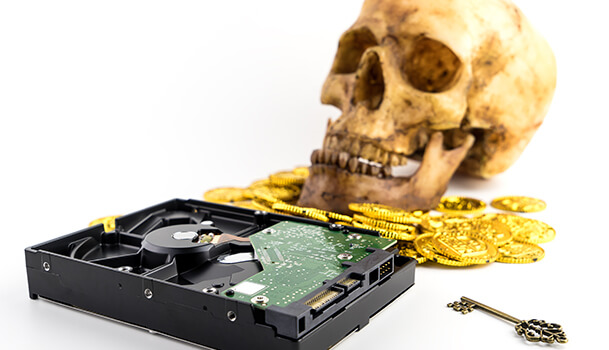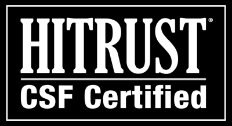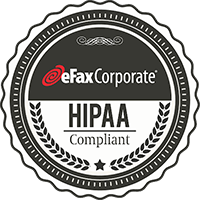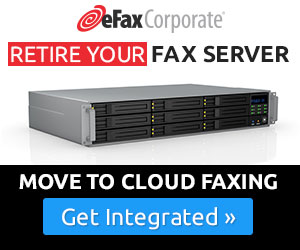Every time you turn around these days the sordid details of yet another corporate data breach scandal has made its way onto the front pages of national newspapers and into the public discourse.
While a PR nightmare, data breaches in general have the power to serve as a fore-warning of the damage that can occur when companies fail to properly organize, manage, store, transmit, secure and backup their internal and external data.
Let’s take a look at a 2016 data breach scandal that involved several hotels and bars in several cities.
According to News 5 Cleveland (ABC), “Malware was installed on servers that processed payment cards used at a dozen restaurants and bars.”
Cardholder names, card numbers, expiration dates, and internal verification codes were all compromised, resulting in unauthorized charges and a long list of security problems for the cardholders and the companies involved.
In total, the data breach spanned a four-month period and left at least a dozen companies – including Michael Jordan’s Steak House in Chicago – reeling from the disaster.
The debate about whether such data breaches are preventable will continue to be hotly debated within the public sphere.
But what is also important is that we not forget the level of damage that can occur when companies chain their entire organization to a single data infrastructure.
As the old saying goes, “Don’t put all your eggs in one basket.”
Think of it.
Processing all your data through a single data infrastructure puts your enterprise at risk for delays, financial loss, and scandal, should that data infrastructure fail.
(Let us also not forget that some scandals make the front pages of national newspapers.)
Do you know what approaches to data infrastructure are available to help your businesses better protect its data?
What is a Hybrid Approach to Data Infrastructure?
A hybrid approach to data infrastructure centers on the idea that businesses can and should do more than one thing with their data.
Instead of storing and managing data solely on-premises or solely in the cloud, good businesses will do both.
By changing how you engage with your data, you’re then able to take greater control over it.
Let’s explore why taking a hybrid approach to data infrastructure can give your business an increased level of reliability, adaptability, and agility for a more advanced data sharing capability.
Hybrid Cloud:
- Ensure secure data back-up and recovery
- Reduce the risk for data theft, data loss and service outages
- Protect internal and external data against unauthorized views
On-Premises
If you’re like most companies, when it comes to the cloud and hybrid vs private cloud strategies, you are probably thinking in terms of outsourcing to 3rd party hosted applications that are not tied to a physical or geographic location.
But some older technologies persist on the premises that seem to defy recent advances in server virtualization. If you are in a regulated industry like healthcare or banking and finance, legal and even manufacturing, then your on-premises data infrastructure many include one or more of the following technologies:
• A community fax machine*
• A multifunction device with phone/fax/printing/and scanning capability
• A fax server
*According to a recent Spiceworks survey of over 1500 IT managers at small to medium sized businesses, over 60% still used traditional fax machines or multifunction printers (MFP) and only 11% did not fax at all.
Although fax machines and MFPs are a common fixture in many local retail stores, distribution warehouses, and corporate offices, it’s important to note that they’re largely viewed as a common means of communication by government agencies as well as businesses that are required by law to protect their customer data from unauthorized personnel.
Yeah, the traditional fax machine can successfully transmit data from one location to the next, but what many people don’t realize is this is exactly where the safety capability of the fax machine ends and the potential for data theft begins.
So what does this have to do with the Cloud? Think of it.
On-premise Fax machines and MFPs cannot prevent unauthorized personnel from accessing documents after they have printed out to the machine’s external paper tray, or stored on an internal hard drive, which poses a real threat to companies that regularly send and receive sensitive data via fax to clients and suppliers.
The longer sensitive data, which might contain your clients’ personally identifiable information (PII) remains out in the open the more likely it is to fall into the wrong hands. When this happens, sensitive data such as credit card numbers and validation codes can be improperly disseminated to unauthorized personnel or be discarded improperly.
Paper records containing PII found in dumpsters have been reported to authorities on more than one occasion. These reports of improper disposal of customer or patient records will usually trigger an investigation for non-compliance with applicable laws and regulations.
So no matter how much your employees enjoy the familiar ease-of-use of a fax machine, the risk of access by unauthorized personnel to your company’s private client information just doesn’t make good business sense—and in the more regulated industries it is against the law.
Bottom line?
While traditional fax machines offer some conveniences, they also create serious security concerns for businesses that handle private data, such as:
• Intentional and unintentional data leaks
• Unauthorized viewing and theft
• Misuse of sensitive data by unauthorized personnel
• Misuse of sensitive internal data
• Fraud
And all the security issues with fax machines apply equally to MFPs which tend to be placed in the most accessible office spaces since so many people need to use them for printing and copying.
All of these security risks could be minimized by outsourcing to a cloud-based solution.
It’s not just that fax machines and MFPs are unsafe. They are also expensive to operate and maintain. At one school district, they have a policy that when a fax machine breaks it is not fixed or replaced. Instead they move the phone/fax line to a multifunction printer. The district IT department believes they are cycling out obsolete technology.
But they are not really getting rid of old technology, just replacing one with another that does the same thing, and more. The telecommunications lines remain, connected into the back of the large printer/copiers where they would be all but forgotten were it not for the monthly bills that can add up to hundreds of dollars a month in addition to the printing costs for paper and toner. For example, just six departmental MFPs with one fax line each can cost $300 to $400 a month in recurring telecommunication charges.
With a cloud fax solution, there are no fax line costs – all traffic runs over the same Internet access as all other data traffic. So right there you are saving hundreds of dollars per month.
Fax servers also have their fair share of problems.
They are susceptible to routine disc failures, frequent reboots and other problems. Virtualization is not an option for most, which means they run only on dedicated hardware. And each fax server requires a pricy fax modem board that can run into many thousands of dollars depending on the number of channels required.* [See our earlier blog titled “The 90s called; they want their fax server back.”]
Not only that, but when server system outages occur, businesses that have not diversified and load-balanced connectivity on redundant platforms may find themselves dead-in-the-water. In some cases, an IT consultant may need to be called in for assistance getting operations back to normal.
So while handy, restricting your on-premises document communications system to fax machines and MFPs or concentrated in a fax server could present more problems than it resolves.
Therefore, the best way to enhance your operating reliability is to pair your existing technologies with a secure and redundant off-premises cloud solution.
Taking a hybrid approach to data infrastructure is the most trusted way to protect your sensitive data against unauthorized views and theft, simultaneously offering a reliable failover solution in the event that your local technology experiences an outage.

The Cloud
The cloud (or “cloud faxing” as it is more commonly known) is a ready-to-use solution that makes sending and receiving sensitive data safe, fast, and easy.
In fact, with the cloud, your most pressing concern won’t be security, but deployment i.e., how quickly a cloud fax service can be deployed across your entire organization. Usually the answer is, “pretty quickly,” as in a number of days.
In most cases, simple deployments take just a day to implement. There is no installation required and user provisioning is done online through an easy-to-use Web interface. However, more complex and large-scale deployments involving the transition of hundreds of preexisting fax numbers can require a few weeks to port over all numbers to the new service.
Once deployment is complete, you’re free to begin reading, saving, sharing, downloading and printing faxes from your preferred Web-enabled device.
Cloud fax services like eFax Corporate offer a range of state-of-the-art features that allow businesses to:
• Send and receive sensitive data on demand with state-of-the-art security.
• Manage faxes and add/drop users without having to engage with your service provider.
• Archive received faxes for an arbitrary duration based on your document retention policies.
• Access fax audit trail and generate on custom reports as needed.
• Turn storage off completely if required for regulatory compliance.
Bottom line?
Cloud faxing is usually more affordable, flexible and faster to deploy than an in-house fax network, and it offers the added value of backup and recovery services at no extra cost.
Also, the cloud is equally as easy to deploy as an MFP or the traditional fax machine, particularly considering that multifunction printers and fax machines need to be set up, tested, and configured to work with other technologies. Often a lengthy troubleshooting process is required with the equipment vendors, especially if the connectivity is provided through Voice over IP.
In Both
Having a hybrid fax solution is like having a “get out of jail free” card tucked away in your back pocket for safe keeping.
Think about it.
If there’s ever an outage at your office or place of business, the downtime won’t impact workflow.
This is precisely why failover capability is important in today’s dangerous, high-tech world.
Businesses need to know that their data infrastructures won’t collapse, if, say, a fax server fails or is compromised by Ransomware.
And let us not forget that some data just doesn’t belong out in the open for anyone to view, copy, and steal.
Rather, it should be contained in a secure cloud storage, where physical security and advanced encryption technology can protect it while in transmission and at rest.
Here are just a few of the benefits to taking a hybrid approach to your data infrastructure:
1. Enhance your fax infrastructure on demand. Hybrid cloud approaches aim to change the way you engage with your data. You are encouraged to not only keep your data on-premises, as needed, but to also secure sensitive data in the cloud for increased accessibility and survivability, should a data loss or lockout occur at the local level.
2. Serve remote workers. Utilizing a cloud solution in connection with an on-premises data infrastructure allows remote workers to quickly and securely send and receive faxes while out of the office.
3. Scale your faxing capability to meet changes in demand. A hybrid cloud fax solution allows your team to meet unexpected changes in demand (or workflow) with increased elasticity in both directions, up or down. This keeps your resources open and adaptable—something that will be particularly important as your business grows or needs change over time.
Bottom line?Hybrid approaches to data infrastructure act as a “fail-safe” in the event of a breakdown or malfunction.
Businesses can quickly and easily revert to a safe and secure way to send, receive, and store data without delays or questions about data security and privacy.
With hybrid cloud approaches, your data is always accessible and ready for engagement—no matter where you are or what has happened to your other data infrastructures.
eFax Corporate
Whether you’re in the office, away on a business lunch or out on the road, our state-of-the-art fax features let your business access its sensitive data from any Web-enabled device.
Our advanced secure faxing offers TLS-encryption protects your data during transmission, while our AES 256-bit storage encryption technology keeps your data safe while at rest in your password-protected cloud storage account.
In just a few, easy steps, our fax service can change the way you access, store, manage, archive, and transfer sensitive data.
To learn more, visit our eFax Corporate and our business fax solutions resource page.











